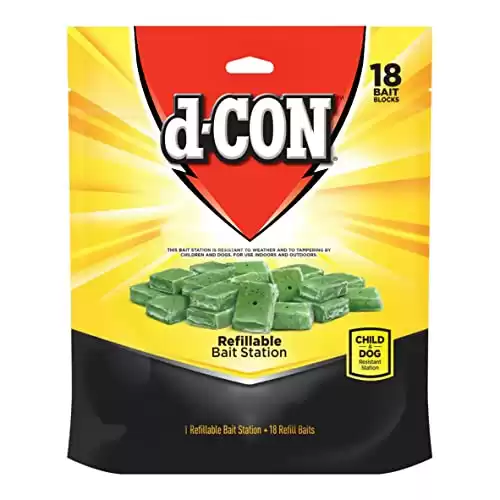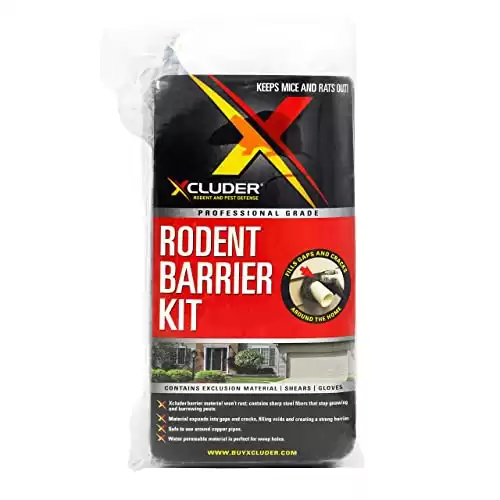Living with house mice may be tremendously frustrating, especially if you notice that the problem is getting worse but are unable to identify the source of the mice. Mice can spread disease and cause sanitary problems. By gnawing holes in the structure, they degrade it and draw additional rodents with their stench and mess.
Mice leave waste and chewed nesting materials all over their preferred hiding spots, and they ruin stored items and products with their urine and droppings. Everyone will agree that having unwanted mice within the home is a major issue, but what should you do if you think you may have a mouse infestation?
6 Steps to Getting Rid of Mice
If you have an infestation, you can get rid of the mice in your house without killing them.
1. Find Their Entrances
Mice must first gain access to your house in order to build a nest there. Entry points include cracks around windows and doors, attics, basements, crawlspaces, and attics.
The National Pest Management Association’s Cindy Mannes explains, “Find out where they’re coming from because setting traps indiscriminately all around your basement floor isn’t going to do you any good.”
Once you know where they’re coming in from, you’ll be able to better handle getting rid of the pesky pests. This leads us to the next step.
2. Set Traps
Mouse traps are the most effective tool for assisting in the removal of a mouse problem in your home. For small to moderate mouse populations, the traditional wooden snap traps will work, but you should be aware that most people misjudge mouse infestations. It’s not unusual to set 12 traps for a single mouse, or what you believe to be a single mouse.
There are so many types of traps on the market, you’ll find something that works for you. Another smart move is to set up a variety of traps. Along with the wooden traps, use bait traps, multiple-capture live traps, and adhesive traps. This is the greatest method for exterminating mice in the home, barring hiring a professional, as some mice may be sensitive to particular kinds of traps and are aware of how to evade them.
Some of the most common types of mouse traps are:
- Snap traps: Snap traps are intended to quickly kill rodents by snapping shut onto them.
- Glue traps: A glue trap uses adhesive paper of an industrial grade to capture mice. When possible, avoid using glue traps because they capture the animal without harming it. Keep in mind that several US states have laws against using these kinds of traps.
- Live traps: You can capture and release mice or other vermin in your house. Although it is the most gentle method of trapping, if you have a greater infestation, it might not be effective.
While having a trap is crucial, so is what’s inside or on top of the trap. Let’s talk about baiting the mice!
- These traps are safe for you to use, with no poison or glue to worry about.
- Easy to set and use — just place bait in the cup and open the clamp
- Features a highly efficient and sensitive trigger
- Powerful stainless steel spring
3. Use the Right Bait
You can use mouse-approved foods like chocolate, peanut butter, bacon, oats, dried fruit, or hazelnut spread as bait in addition to whatever the mice have been consuming in your home. When you’re prepared to set the loaded trap, attach the bait to the trigger using dental floss or a fishing line.
By doing this, the mice will receive their just desserts without just running off with a tasty treat. A hot glue gun can also be used to hold the bait in place. Every two days, switch out the bait for fresh. Try utilizing nesting materials like cotton balls or feathers if the food isn’t working.
- Easy to use
- Comes with 18 bait refills
- Contains no anticoagulants or neurotoxins
4. Get a Cat
Getting a cat is the most traditional strategy you can think of, and it’s fairly successful in reducing the number of rodents. Natural rodent predators can be a fantastic way to prevent mice from arriving for a visit in the first place since they won’t want to come into a home that has cats living within or roaming the neighborhood.
The majority of the time, mice that live inside a house won’t spread illnesses that can harm cats, but it’s probably advisable to keep them from going on hunts. Mice should be kept at bay by the smell of a cat and its litter box.
5. Keep Your Home Clean
Achieving effective management of the mouse population depends heavily on maintaining a clean, clutter-free kitchen and house. They can’t stay in your home for very long if they can’t find locations where they can easily acquire food to build their nests and raise their young. Be sure to keep pet food and snacks tightly packaged and sealed.
6. Seal Entryways
If in step number one, you find holes that mice have made in order to get into your home, it’s essential to seal these spots. Use material that they can’t use for nesting either. Just stuffing the hole with cotton might encourage the mice to stay.
Be sure there aren’t other sneaky entryways into your home. Check for cuts in screen doors, and cracks in the foundation, and don’t forget about under the stairs, up in the attic, and storage areas!
- Designed specifically to create an impenetrable barrier to keep mice out
- Made from stainless steel
- Eco-friendly and non-corrosive
- No harsh pesticides or chemicals
- Kit includes scissors and gloves
Why Are Mice Attracted to Houses?
According to scientists, there is currently one rodent in the United States for every human. These resilient animals can survive in almost any nation and on any sort of landscape, including grasslands, forests, and everything in between.
Although mice are adept at building homes in the wild if, given the choice, they will gladly enter a warm home. Mice enter homes in search of warmth and shelter as the season’s change and winter arrives. They can squeeze through openings as small as 1/4 inches because of their small bodies.
They’ll visit your house for meals as well. For mice to survive, food sources must be steady. They will therefore establish a base of operations wherever they can find enough food to last them. Finally, these little creatures build nests where they give birth and raise their young. However, they will also use dog hair, carpeting, and anything else they can get their paws on. They like soft materials like shredded paper and cotton.
Identifying an Infestation
Regardless of whether you presently have a mouse issue, it’s wise to keep an eye out for any indications of a rodent infestation.
- Claw or chew marks on shelves and on food packages. On wood doorframes and baseboards, you might also see claw and gnaw marks.
- You might find food debris in strange places like a shelf
- Sudden shorts in appliances like lights. Mice have a reputation for harming cables by gnawing on them.
- Droppings can accumulate in cupboards, under sinks, or close to appliances and have the appearance of little, rectangular specks. When looking for mouse droppings in cupboards and other dark areas, use a flashlight because they may be difficult to see.
- You’ll find nests built from flexible materials like string, fabric, or shredded paper.
- A mouse or other pest infestation may be indicated by nighttime sounds of scratching in the walls.
- Mice in the house may be the cause of strange pet behavior like barking, vigilance, or pawing beneath appliances and furniture.
Up Next
- Does Irish Spring Soap Keep Mice Away?
- Will Mice Return To A Disturbed Nest?
- Mice In Your Garage? Here’s What To Do Now
- How Do You Know When All The Mice Are Gone From Your House?
The photo featured at the top of this post is © iStock.com/Bruno_il_segretario
Thank you for reading! Have some feedback for us? Contact the AZ Animals editorial team.









